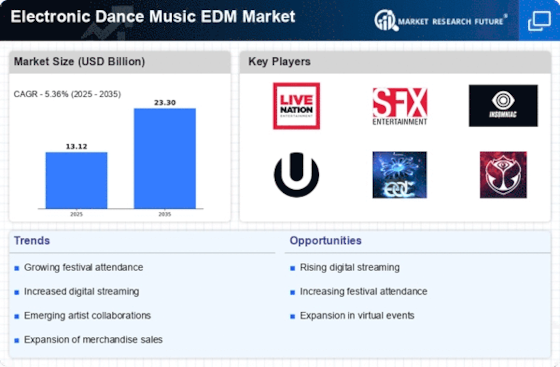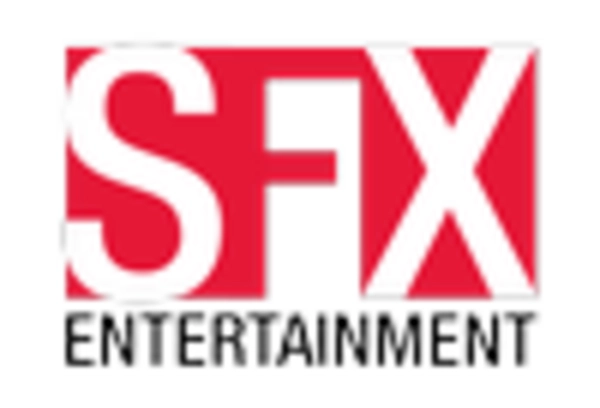Rise of Streaming Platforms
The proliferation of streaming platforms has transformed the Electronic Dance Music EDM Market, providing artists with unprecedented access to audiences. Platforms such as Spotify and Apple Music have reported substantial increases in EDM playlists, indicating a growing consumer preference for this genre. In 2025, streaming accounted for over 80% of music industry revenues, with EDM being a significant contributor. This shift not only enhances artist visibility but also allows for real-time data analytics, enabling artists and producers to tailor their music to listener preferences. As a result, the Electronic Dance Music EDM Market is likely to experience continued growth, driven by the ease of access and the ability to reach a global audience.
Expansion of Music Festivals
The ongoing expansion of music festivals dedicated to Electronic Dance Music EDM Market is noteworthy. Festivals such as Tomorrowland and Ultra Music Festival have seen record attendance numbers, with some events attracting over 400,000 attendees annually. This trend suggests a robust demand for live EDM experiences, which in turn fuels the market's growth. The festival experience not only showcases a variety of artists but also creates a communal atmosphere that enhances fan engagement. Furthermore, the economic impact of these festivals is substantial, contributing millions to local economies. As more festivals emerge, the Electronic Dance Music EDM Market is poised for further expansion, appealing to both new and existing fans.
Increased Investment in Artist Development
Investment in artist development within the Electronic Dance Music EDM Market appears to be on the rise. Record labels and management companies are increasingly recognizing the potential of EDM artists, leading to enhanced funding for marketing, production, and touring. In 2025, it is estimated that investment in artist development has increased by 30% compared to previous years. This influx of capital allows artists to produce higher quality music and engage in more extensive promotional campaigns. As a result, the market is likely to see a surge in new talent, which could diversify the EDM landscape and attract a broader audience. This trend indicates a healthy future for the Electronic Dance Music EDM Market.
Technological Advancements in Music Production
Technological advancements in music production are reshaping the Electronic Dance Music EDM Market. Innovations such as artificial intelligence and advanced software tools are enabling producers to create more complex and engaging tracks. In 2025, it is reported that over 60% of EDM producers utilize AI-driven tools to enhance their creative processes. This technological integration not only streamlines production but also allows for experimentation with new sounds and styles. As these tools become more accessible, the barrier to entry for aspiring producers lowers, potentially leading to an influx of new talent in the market. Consequently, the Electronic Dance Music EDM Market is likely to evolve rapidly, reflecting these technological changes.
Growing Popularity of EDM in Mainstream Culture
The growing popularity of Electronic Dance Music within mainstream culture is a significant driver for the market. In recent years, EDM has transcended its niche origins, becoming a staple in popular music charts and media. Major artists from various genres are increasingly collaborating with EDM producers, further blurring the lines between genres. This trend is evidenced by the rise of EDM tracks in Billboard charts, with several tracks reaching the top 10. As EDM continues to permeate mainstream culture, it is expected that the Electronic Dance Music EDM Market will expand, attracting a diverse audience and fostering new collaborations. This cultural integration may lead to increased sales and streaming, further solidifying EDM's place in the music industry.


















Leave a Comment